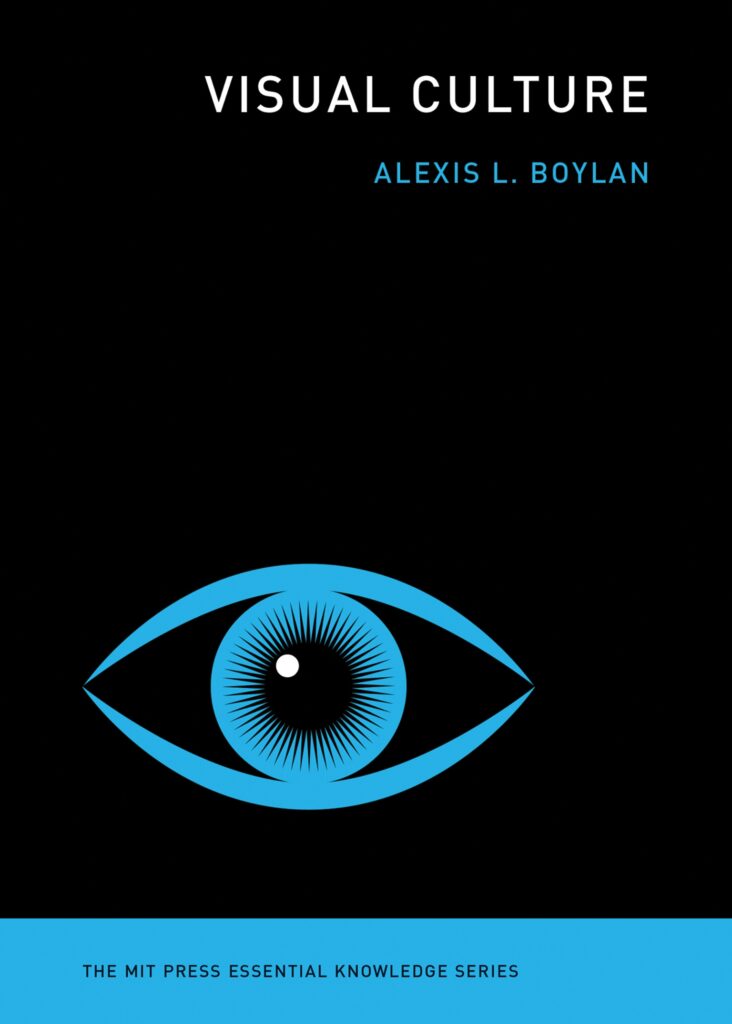
Visual Culture (2020) Alexis L. Boylan
Visual Culture (VC) is ‘[a] field of study and academic discipline’ that has its roots in Art History and Cultural Studies’ (Boylan 2020., 20; 22-29). Its object is admittedly broad, in the author’s description: All of your visual memories, all of the images on screens, all of the objects in your house, everything in everyone else’s house, all of the images on billboards, the sides of buses, and in subways, all of the pictures of cities and farms, all the maps, all the cartoons, all the things you think you’ve seen but haven’t yet. (Ibid, 29). What brings together this disparate array of items is the fact that they are all apprehended in the act of looking1. This, in its turn, is described elsewhere in the book as ‘a moral journey and 1 This needs qualifying, as ‘participation in visual culture is not contingent on the ability to physically see. Those with visual impairments are swept into these dialogues of VC as part of the “multisensory networks.” Physical sight is an element, but not the whole, of what visual culture is and does.’ (Ibid., 29).a cultural necessity’ that should be undertaken with ‘dignity and empathy’ (ibid., 95. My italics), which gives a hint that VC goes beyond mere ‘disciplinary conventions’. Thus, it can be described as an ‘attitude’, a ‘way of thinking and looking’ and a ‘means of inclusion (ibid., 20). But VC is also concerned with exclusion–with ‘visual oblivion’ (ibid., 75), as the author puts it: For every ancient handprint we see on a cave wall, we must ask, whose hand did not warrant an outline? For every historic site we look at in wonder, we must also whisper to ourselves, why was this preserved and not that? What was destroyed or turn down to build this? We always need to look closely and ask, why this and not… well, anything else? (Ibid, 39). This aggressively inquisitive attitude can be turned on VC itself, raising troublesome questions: Is seeing innocent? When does seeing become an act of violence or aggression? What rights do any of us have to be seen or not seen, to make ourselves invisible? (Ibid, 39). It also leads to the acknowledgment of a ‘fundamental paradox’, namely that ‘we have never been able to truly see ourselves or anyone else’ (ibid., 95). Implicit in this is a concern with ‘seeing and representing’ bodies that are ‘resistant and unruly, constantly defying the authority of the gaze’ and ‘the legacy of the visual’ (ibid., 95). Historical practices are by no means the only concern of VC, though; new ways of looking, as afforded by the latest technologies, are also a major factor for it. Hence, a profound interest in what ‘virtual reality, AI and facial recognition’ (ibid., 95) but also ‘algorithm generators … data synthesis [and] computer-to-computer visualization’ (ibid., 165) bring to the act of seeing and representing human and non-human bodies as well as the wider world. This is particularly important as far as current events are concerned, most notably ‘global warming and climate change,’ which are described as ‘literally a crisis of vision’ (Ibid, 165-66). VC, therefore, is interesting for the project of building an Aesthetics of Care (AoC). Both are focused on sense perception, they blur disciplinary lines with a combination of scholarship and activism, and share an interest in Ethics, the body, the environment and how technology affects all three.
